
2017 saw yet another instrumental increase in urban cycling in cities across the globe, further legitimizing pedal power as a mode of transport for citizens the world over. As another year has passed, another busy twelve months came and went for the team across our four Copenhagenize Design Co. offices. This year solidified the work of our newest office in Barcelona, developing new partnerships with the Municipality to study bicycling in Catalonia. We have had an exciting year collaborating with new client cities from Montréal to Antwerp, completing transformative mandates in Detroit and Strasbourg, and continuing progressive work to elevate the bicycle agenda in forward-thinking cities like Long Beach and Bordeaux. 2017 also marked an exciting point of growth for Copenhagenize Design Co. as our management team expanded to include partners James Thoem, Clotilde Imbert and Michael Seth Wexler. Our Year in Review (Download the PDF here) looks back at our highlights from the last calendar year as we gear up for an incredibly exciting 2018.
THE LIFE SIZED CITY
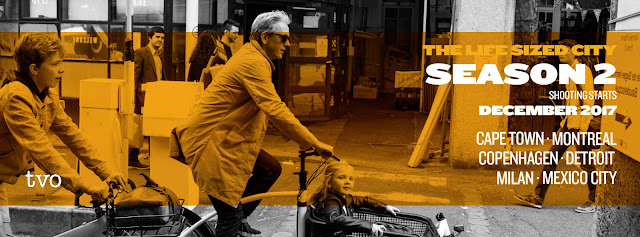
Having launched in September of this year, Mikael released his first television series “The Life Sized City” – offering a fresh look at urbanism around the world. Premiering with Canadian broadcaster TVO, and produced by Montreal-based DBCom Media, Mikael travels the world, hearing from engaged locals involved in fascinating urban projects – at both the grassroots and government level. The first season went live across Canada this year with episodes featuring the cities of Medellín, Toronto, Paris, Bangkok, Tokyo and Tel Aviv, while Mikael continues his journeys into 2018, kicking off season two in Cape Town.
THE 2017 BICYCLE-FRIENDLY CITIES INDEX
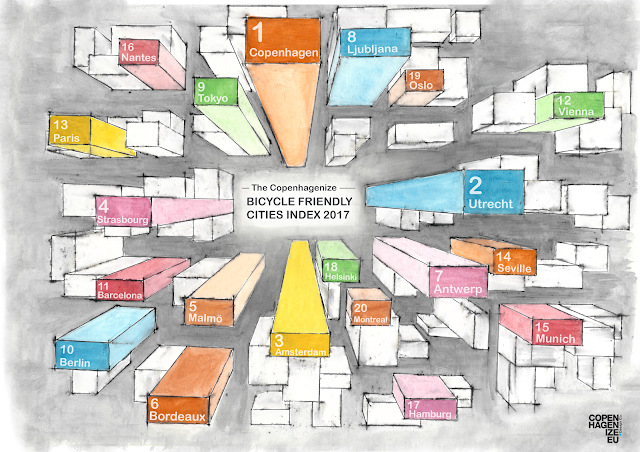
For the fourth time since 2011, Copenhagenize Design Co. crunched the numbers and analysed over a hundred and thirty urban regions to reveal the 20 most bicycle-friendly cities in the world. These findings were seen by readers of WIRED magazine in all corners of the globe. Using 14 parameters – this year adding cargo bike logistics as a parameter – the crème de la crème emerged with some surprises, as Utrecht stole second place from Amsterdam, while others such as Copenhagen, Strasbourg, Malmö, Bordeaux and Antwerp remained stable in the top 10.
THE COPENHAGENIZE MASTER CLASS(ES)

A trip to Copenhagen is a must in order to understand what makes a truly bicycle friendly city. Every year, planners, engineers, city officials, politicians, community leaders and academics from around the world come visit our team in Copenhagen to learn firsthand how good bicycle infrastructure design really makes a difference. This June as every year, we welcomed back an international group of thirty participants for an immersive bicycle urbanism experience, and a whole lot of fun. Our master Class has connected a network of many engaged urbanists across the globe to bring a piece of Copenhagen to their home cities and share ideas with one another.
Throughout the year, we also have the pleasure of welcoming international delegates to Copenhagen who aim to reach new levels of quality bicycle infrastructure design in their cities back home. Delegations of urban designers, traffic engineers and politicians from Barcelona, Bordeaux, St. Petersburg, and Burlington, Canada each visited our Copenhagen team at different points of the year for several days of lectures, workshop activities and lots of cycling around the city. These groups were able to fill their idea catalogues with best practice in design, bicycle policy and network planning. Planning for a number of delegation visits in the new year are already underway.
CYCLING PROJECTS IN THE U.S.A.
The past year was filled with a lot of positive change in American cities, as the number of protected bike lanes continued to rise, more innovative bike plans started popping up around the country, and we began to hear more cities talk about building a network for bikes as transport – an essential first step in the U.S. context. We got our hands dirty working hard with the City of Detroit’s Planning and Development Department to draft a forward-thinking protected bicycle network strategy for the greater downtown area, helping to set a standard for many American cities to follow.
We held public meetings and helped the City imagine a more connected future for all of their vulnerable road users. The plan is now in the final drafting phase and will go public in the new year! At the same time, our North American team stayed active in Detroit through working on a collaborative team of planners, landscape architects and consultants to draft a neighbourhood plan for the Islandview and Greater Villages community – with our focus on mobility and extending safe and practical bike planning from the downtown to the neighbourhoods.

Long Beach, long proclaiming to be the most bicycle-friendly city in the U.S. continues to impress with their political will to continually build more and more protected bike lanes on major roads to fill in their pledge from their recent Bicycle Master Plan. We continued our work with this modern administration and Development Services Department, helping guide them on issues of backlash from parking removal, misconceptions in commercial corridors and dealing with the ever-present issue of NIMBYism. Our work reached even further, offering local cutting-edge traffic engineers innovative ideas for intersection design and conceptual bicycle and pedestrian bridge links over the LA River.
BICYCLE URBANISM IN OUR MONTRÉAL OFFICE

The year started busy in our North American office, with the international Winter Cycling Congress being held in Montreal, Mikael presenting stories from Copenhagen and Russia, and hosting a number of delegates at our Mile End office. Our team began a first mandate with the City of Montréal, consulting on how they might best link bicycle infrastructure through the abandoned Outremont train yards, as a new university district rises from the rails. Throughout the year, Copenhagenize Design Co. advised on the local administration’s new bicycle framework plan, shared ideas with local leaders, collaborated with a number of local organisations to create design recommendations for problematic intersections, and continued to document the City’s bicycle infrastructure as Copenhagen-style footrests began to appear across the city. Next year is bound to be exciting as our team has high hopes for the new bicycle-friendly city administration.
FRENCH CITIES AND DANISH DESIGN

French deputies are working on the production of a general law on mobility that will be voted by the Parliament in 2018. Copenhagenize Design Co. has contributed to workshops in the aims of highlighting the importance of prioritising cycling as a serious means of transportation in order to change the modern transport paradigm in our cities. Our team has been continuing to do innovative work with the Eurometropole of Strasbourg on a comprehensive visual identity, a wayfinding strategy and the implementation of services to turn the bicycle superhighway network VéloStras into a world-class metropolitan network. Through the efforts of a pilot project, Copenhagenize Design Co. evaluated the reactions of the bicycle users to the modern and innovative wayfinding designed for the
VéloStras network. The new visual identity branding for the network will be implemented across the 130 km of cycling routes. Moreover, together with partners – Inddigo and UrbaPlan – our France office has contributed to the elaboration of a new bicycle plan which will be voted in 2018 and driven by ambitions for the most bicycle-friendly city in France.
BELGIUM HAS A THIRST FOR COPENHAGEN
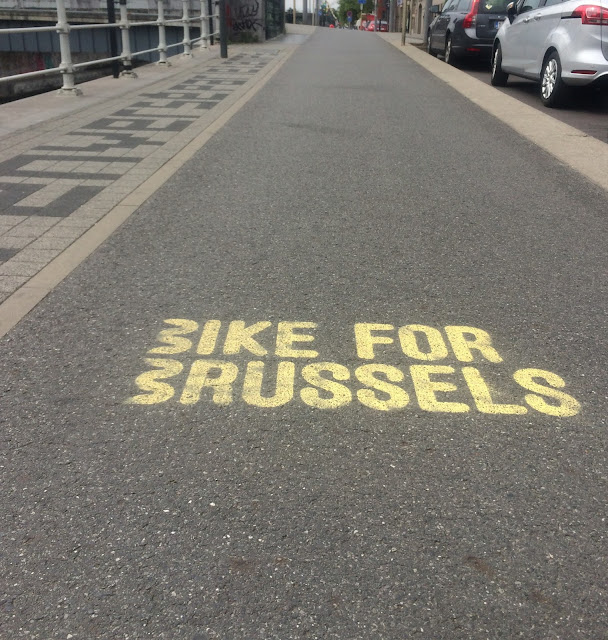
In 2017 and ongoing into the new year, the Copenhagenize European teams have been supporting Omgeving, De Urbanisten, and COBE architects in a project that will shape future of Antwerp’s West Bank. As the city looks to overdeck an outdated ring motorway that has long served as a barrier within the urban fabric, the project team has presented a vision that engages local residents, nurtures local watersheds, and provides real mobility options. Copenhagenize’s participation in the project ensures the bicycle will play a primary role as a legitimate mode of transportation for traversing the former ring road and connecting the West Bank to the Centre City.
Additionally, Copenhagenize Design Co. focused new attention on studying people not using a bicycle as a mode of transportation.Together with Kwin and the researchers of the Vrije Universiteit Brussel, our local office contributed to a profiling of non-cyclists of Brussels in order to get a understanding of their mobility habits and their perception of cycling. Based on this analysis and the target groups defined, our team is in the process of producing a catalogue of communication campaign ideas for Brussels Region Capital for the new year.
COPENHAGENIZING CATALONIA
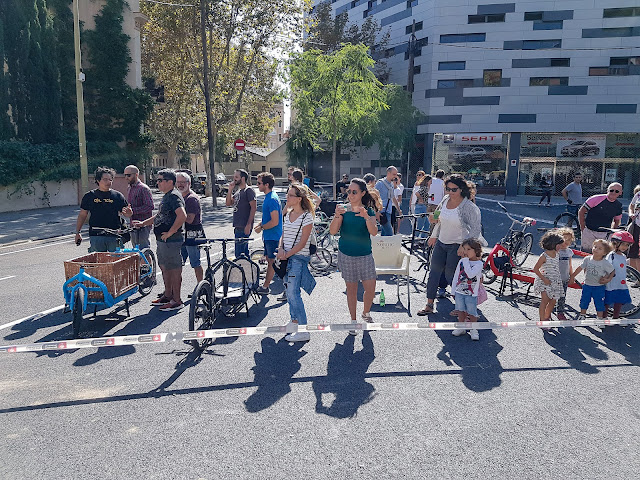
The new Copenhagenize Barcelona office hit the ground running. The results of a comprehensive Desire Lines Analysis in the Eixample neighbourhood of Barcelona were presented to the local city administration. 7 hours of observation and 2,627 cyclists were tracked in late 2016 and subsequently displayed in an engaging document for the local client at the beginning of this year to show how Barcelona’s intersections might be better conceived for vulnerable road users. Following this success, the local team has begun a new study for the Metropolitan Area of Barcelona analysing the distribution of urban goods in low carbon emission zones. This work continuing into 2018 will culminate in the action of launching a micro-distribution pilot project – elevating and testing ideas of cargo bike logistics. As summer continued on, the City of Barcelona trusted our local team to make a review of all strategic work that the municipality has been developing over the last couple of years to improve bicycle mobility. With this project our team will be offering the municipality a global document from the perspective of best-practice bicycle infrastructure inspired by Copenhagen.
THE RETURN TO ALMETYEVSK - RUSSIA’S BICYCLE GEM
In 2017 we had the exciting opportunity to revisit Almetyevsk, a City we worked exclusively with in guiding their transformation into the most bicycle friendly city in Russia. The project began back in 2015, when we were commissioned to develop a bicycle strategy for this small city in the oil fields of Tatarstan. Two years and 100 kilometres of bicycle infrastructure later (yes, you read that right, 100 kilometres in 2 years) we returned to Almetyevsk to see firsthand how the city has transformed.
We had heard the skeptics before: “Nobody in Russia will ride a bike” “It’s too dangerous to cycle in Russia” or “You can’t bike in Russia, they have winters!”. But of course, Almetyevsk proved to be another case showing the importance of a network of reliable and safe bicycle infrastructure. Upon arriving on a Thursday afternoon, we were pleasantly surprised to see dozens of everyday people cycling along cycle tracks as if it was the most natural thing.
Where once bicycles were relegated to playgrounds, they have now become an everyday mode of transportation in Almetyevsk, with everyone from children to seniors seen comfortably riding through the city along dedicated cycle tracks, guided by dedicated bicycle traffic signals, and welcomed with reliable bicycle parking.
TALKING ABOUT BICYCLE URBANISM - OVER 25 INTERNATIONAL KEYNOTES IN 2017
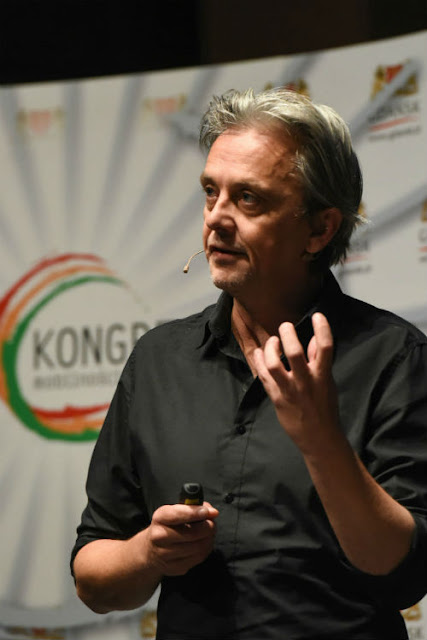
Copenhagenize Design Co., together with partners from the BiTiBi project, organised a European conference in Utrecht (The Netherlands) to promote the efficient use of first and last mile bike-train combined trips. Over a hundred participants attended the event with speakers from Belgium, the Netherlands, the United Kingdom, Italy, and Catalonia. They shared their successful local experience with intermodal projects and design and stressed the importance of building well-designed bike parking at train stations as well as offering reliable bikeshare systems for train passenger last mile travel (see below).
POSTCARDS FROM THE MECCA OF BICYCLE URBANISM
 Copenhagen never ceases to inspire. With a rapidly expanding network of cycle superhighways connecting the region, widened cycle tracks, improved wayfinding, and newly dedicated ‘cycle streets’, the City continues to prove itself as the world’s most bicycle friendly urban centre. And these efforts don’t go unnoticed. New statistics released in 2017 show cycling and cycling infrastructure in Copenhagen to be more valuable than ever:
Copenhagen never ceases to inspire. With a rapidly expanding network of cycle superhighways connecting the region, widened cycle tracks, improved wayfinding, and newly dedicated ‘cycle streets’, the City continues to prove itself as the world’s most bicycle friendly urban centre. And these efforts don’t go unnoticed. New statistics released in 2017 show cycling and cycling infrastructure in Copenhagen to be more valuable than ever:
- 97% of citizens are generally satisfied with the Copenhagen’s efforts as a cycling city.
- 41% of trips to work or school are done by bicycle
- The risk of injury for citizen cyclists has dropped 23% in the last ten years
- 70% of Copenhagen children get to school by cycling, walking, skateboarding or scootering.
- Copenhagen invests €39 per resident per annum on cyclingrelated initiatives
- 48,400 bicycle riders cross Queen Louise Bridge on a typical weekday
- The Farum cycle superhighway route has seen a 61% increase in bicycle traffic since opening in 2013
PREVIEW 2018...
THE COPENHAGENIZE TEAM GROWS
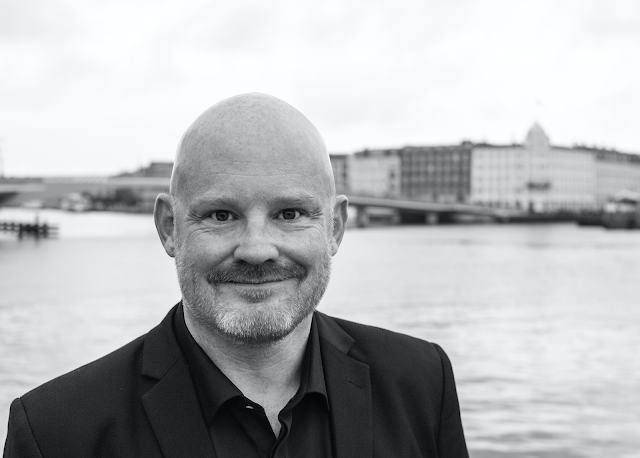
In January 2018, Copenhagenize Design Co. welcomes a new member to its international, multidisciplinary team. Morten Kabell is stepping down from four years as the Copenhagen mayor of the Technical and Environmental Administration and after a rewarding 20 year career in municipal politics. He has chosen to continue his work in urban development with Copenhagenize overseeing organisational structure and development, helping to orchestrate the company’s growth in the coming years. He will also act as another external face of the company, alongside CEO Mikael Colville-Andersen, representing the consultancy at conferences and events around the world.
COPENHAGENIZE – THE BOOK
Copenhagenize the book offers vivid project descriptions, engaging stories, and best practices, alongside beautiful and informative visuals to show the general public how to make the bicycle an easy, preferred part of everyday urban life. The book will serve as inspiration for everyone working to get the bicycle back into our cities. It will give planners and designers the ammunition to push back against the Automobile Age and convince the skeptics of the value of the lifesized city. This is not a guide on how to become Copenhagen, but how to learn from the successes and failures (yes, failures) of Copenhagen and other cities around the world that are striving to become more livable. The book goes live in 2018 through Island Press.
AMSTERDAM ANALYSIS
The Copenhagenize Design Co. European team has kicked off the second in a series of intersection studies in Amersterdam, to understand how the City can better improve bicycle flow, safety and comfort. Work is already deep underway from the end of 2017 and will continue on into the new year. Copenhagenize has now launched Desire Lines Analyses in cities around the world from Amsterdam and Copenhagen to Barcelona and Montreal.




